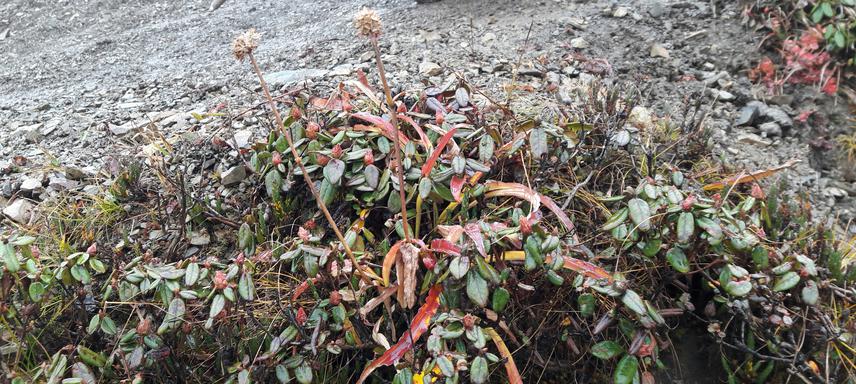Ngawang Dema
Proposed project aims in creation of reference about ecology and habitat assessment of Nardostachys jatamansi DC in west alpine region of Bhutan.

Nardostachys jatamansi with associates.
Bhutan’s rich alpine medicinal plant diversity is endangered and the conservation of the same is of prime importance for the very survival of nature as well as of the poor and marginalized masses of the region. Nardostachys jatamansi DC is one of them, rated as a critically endangered medicinal plant species under IUCN Red list (ver 3.1, 2015) and mentioned in CITES Appendix II. The study area of western alpine region comprises Lingzhi Gewog (village block) in Thimphu district the main medicinal plant collection centre where jatamansi has been reported to be occurring, thus is becoming the focal point of national economy. Lingzhi is located at 27° 51' 14.99" N latitude and 89° 25' 34.79" E longitude, 54 km North West of Thimphu city. Elevation ranges between 3445- 6782 m asl. and the whole Gewog is a part of Jigme Dorji National Park. The park is regarded as the treasure trove of medicinal plants with the last record of 300 medicinal plants and targeted area incorporates the majority of proposed species. Large scale dependence on these forests comprising of unsustainable collection for rhizomes, overgrazing, and loss of habitat and forest degradation poses a great survival threat. In the proposed study, an attempt will be made to assess its ecology, habitat and anthropogenic threat for adopting conservation strategies in the proposed region and ecological resilience.
Methodology will commence with reconnaissance survey involving qualitative study of focused group discussion and questionnaire survey. Field study which will involve laying vertical belt transects and quadrats to assess various aspects of ecology (analytical features for phytosociological attributes, preparation of Voucher specimens, physico-chemical assessment and morphometric trait analysis) and habitat (constituting threat analysis) parameters. Data Analysis and computation using various statistical tools; Statistical Package for Social Science (SPSS/PC) and excel. Probable distribution maps along with habitat status and anthropogenic activities impacting the very survival in the region will produce via GIS software.
Basic contribution of the project relates to Forest and Nature Conservation Rule (2006) in achieving the upliftment of knowledge base in ecological, economical and social aspects. The study will give insight into the habitat of jatamansi which can be made accessible for related functional activities. Project will formulate pragmatic solution and alternatives for conservation with involvement of policy makers and interference of other stakeholders. Consecutively, reliable sustainable harvesting method will be proposed. Awareness for sharing responsibility will be generated filling the research gap.